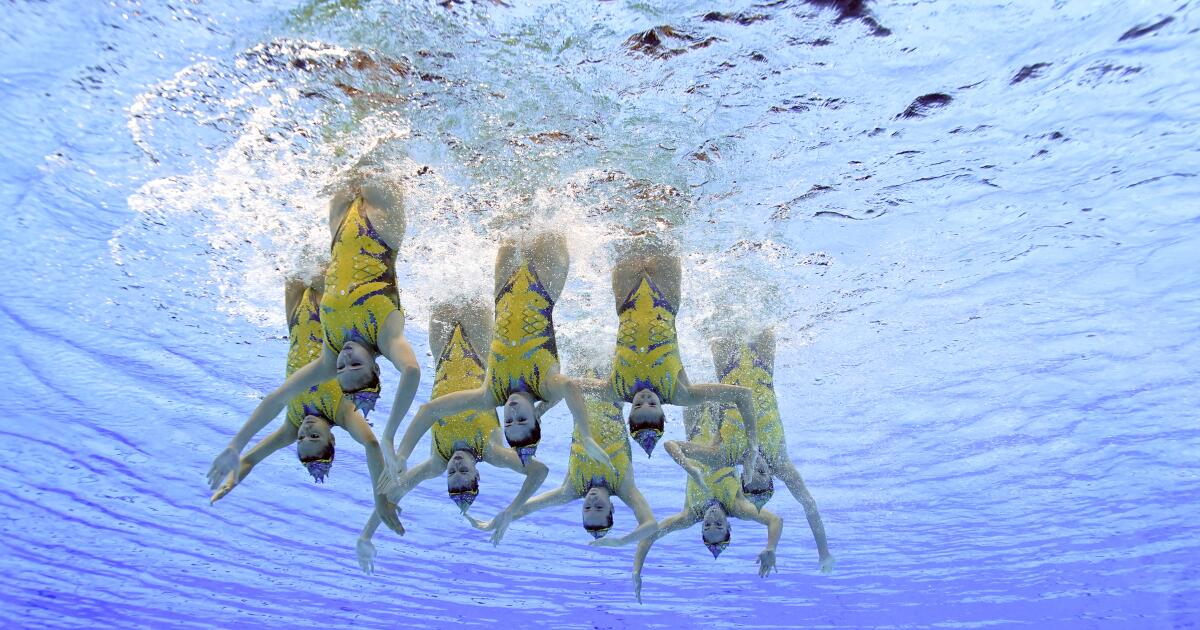book review
Didion and Babitz
By Lili Anolik
Scribner: 352 pages, $29.99
If you buy books linked to on our site, The Times may earn a commission from Bookshop.org, whose fees support independent bookstores.
When I first opened Lili Anolik’s dazzling and provocative “Didion & Babitz,” I had doubts. The first few pages have a choppy, fawning quality that made me think of “fangirl.” And for about 60 pages, as Anolik recalls her first encounter with Eve Babitz's work (a random quote that sent her down the Google rabbit hole) and repeats what captivated her, I remained skeptical. Could Anolik add anything significant to the work he had already produced, including the stunning piece from Vanity Fair 2014 In which he reveals Babitz as his new idol, a secret genius whose dark literary production deserved a renaissance? Anolik followed that up in 2019 with a passionate dive into Babitz's life and personality, the book “Hollywood's Eve,” which celebrates and psychoanalyzes Babitz as a cultural icon who hasn't gotten her due.
I had been among those who flocked to the reissues of Babitz's “Slow Days, Fast Company” and “Sex and Rage,” among the out-of-print titles revived after the Vanity Fair article. I was fascinated by her fictional, semi-autobiographical chronicles of the glamorous and seedy post-1960s Hollywood scene, in which she was a key but unsung player.
Babitz's prose contrasted sharply with that of her friend and contemporary Joan Didion. Didion's is cold and analytical, like the image she carefully cultivated, turning a skeptical eye on California culture. Babitz's literary style, on the other hand, reads as uninhibited, exuberant, and decadent. For all its sensuality, however, there is an innocent, unstudied quality, and for Babitz, Los Angeles is an irresistible mecca with its ruthless transactions on beauty and power and its intoxicating bougainvillea. Babitz had experienced New York City and knew that East Coast artists and intellectuals looked down on Tinseltown, but she was Hollywood's most ardent supporter and most willing participant. She threw herself into the fight with abandon, posing naked for a photo with Marcel Duchamp; taking lovers by the dozen, including Jim Morrison, Harrison Ford and Steve Martin (who gave him a Volkswagen), all at the peak of fame. He dabbled in art and created album covers for artists such as Buffalo Springfield and Linda Ronstadt.
Born in 1943 and coming of age just as the sexual revolution was unfolding, and before AIDS slowed it down, Babitz reveled in her abundant sensuality. Enamored of the artists who flocked to Hollywood, “sex was the way she showed her appreciation.” She was “amazing, reckless, a totally original personality” aided in her seductions by being a “lustful creature.” Her beauty, as well as her preoccupation with men and drugs, often sidetracked her confusing career aspirations.
Once Anolik completed “Hollywood's Eve,” he hoped the book would serve as a kind of “self-exorcism” to close the chapter on his decades-long obsession with a Los Angeles icon. But Didion, always a powerful influence, brought Anolik back.
In 2021, Anolik received a call from Babitz's sister, Mirandi. Eve, now 70 years old, had long suffered from the effects of third-degree burns (the result of a fire caused by lighting a Tiparillo cigarette while wearing a gauze skirt!), as well as the onset of Huntington's disease. . She and her sister had made the difficult decision to move Eve into assisted living. While cleaning Eve's dirty and messy apartment, Mirandi came across a box full of letters that Eve had written and received. She invited Anolik to pore over them with her at the Huntington Library, which acquired Eve's archives. Anolik took a plane from New York to California the next morning.
The first item Anolik pulled out of the box erased any chance of him relegating Babitz to the back shelf. It was a compelling letter from Babitz to her friend-turned-enemy Joan Didion, who had helped Eve make connections in book publishing and edited her first book. In the intervening years, while Didion choreographed a brilliant career, Babitz hovered in fame but couldn't close the deal. The subject of the letter was ostensibly Didion's disdain for Virginia Woolf and the goals of the women's movement, but in her “subtly vicious” inquiries into Didion's more clinical approach to writing, Anolik found it “the way in which “You speak to someone who has deepened their knowledge.” under your skin, whose skin you are trying to bury deep.” Anolik writes that reading it was like “listening to a conversation I wasn't supposed to hear, and my eyes listened eagerly.” With hundreds of additional pieces of correspondence now at his disposal (involving Joseph Heller, Jim Morrison, Didion, and others), a new window into Babitz's world had opened.
On the literary front, Didion took the lead, surpassing the friend she helped publish. Along with her astonishing skill, Didion was everything Babitz was not: disciplined, calculating, protective of her talent and who she allowed to safeguard it. Anolik tries to argue that Babitz and Didion, who died about a week apart in 2021, are yin and yang, two sides of the same coin, hence the thesis of her fascinating book. My conclusion, however, is that Anolik is still Babitz's slave. The correspondence and contacts she has accessed, which contain irresistible nuggets, such as claims that Didion's husband, John Gregory Dunne, may have preferred men, or that Didion's only true love was someone other than her spouse , are supporting players in the larger production: Babitz refuses to leave the stage. Didion may be the most esteemed figure, but she is not the one who captures our imagination in Anolik's narrative.
And I can't blame Anolik for focusing attention once again on Babitz. Her heroine is endlessly fascinating: admirable, self-destructive, loving, frustrating, witty, her brilliant light largely extinguished by “excess, waste and promiscuity, reckless and spectacular consumption,” not to mention a hereditary disease, a lack of a killer race. instinct and a generous spirit that led to many disappointments. In this character study, Didion is more of an afterthought.
As I turned the pages of “Didion & Babitz,” I found myself applauding Anolik’s decision to make one more foray into the brilliant, free-falling, unencumbered but troubled world of Babitz. Would I want my daughter to follow Babitz's path or Didion's, if given the choice? It's probably not Babitz's. But what a ride.
Leigh Haber is a writer, editor, and editorial strategist. She was the director of Oprah's Book Club and the book editor of O, The Oprah Magazine.












